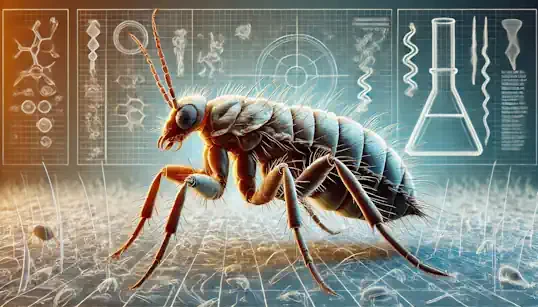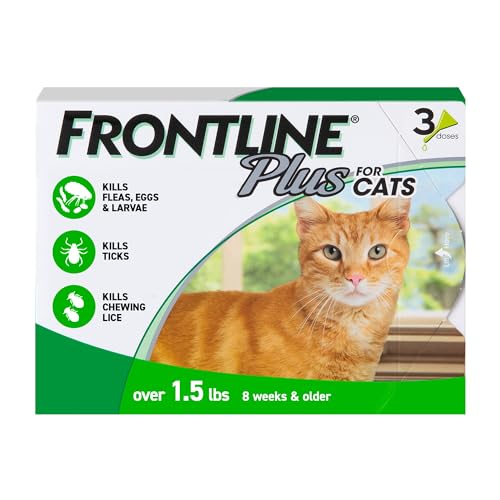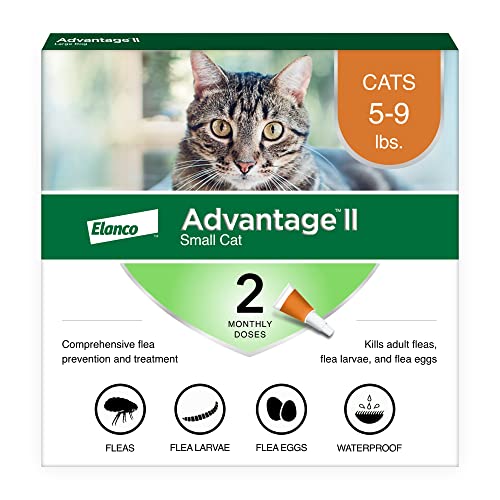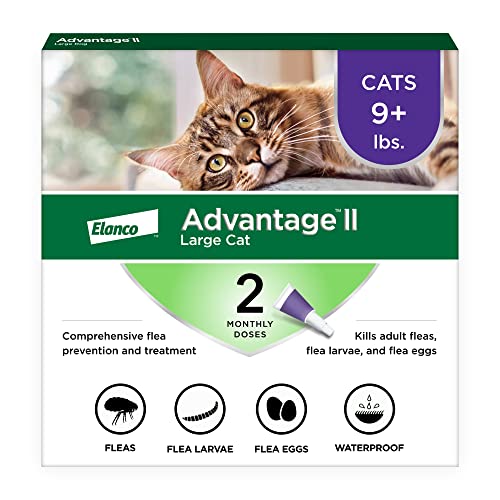You’re petting your cat, enjoying that soft fur and the rumbling purr, and then… scratch, scratch, scratch. You might think it’s just a normal itch, but then you see it again. And again. And again. Suddenly, that casual pet turns into a full-blown inspection, your fingers delving into their fur, searching for… something. And then, maybe, you see them. Tiny, dark, and darting through the fur like miniature ninjas. Uh oh. Yep, "uh oh" is right. It’s the dreaded discovery that sends shivers down every cat owner's spine: fleas.
Now, if you’re feeling a wave of panic right now, take a deep breath. It’s okay. Fleas are incredibly common. Seriously, incredibly common. Finding fleas on your cat is not a reflection of your cleanliness as a pet owner, or any kind of failing on your part. It happens to the best of us, even the most diligent and loving cat parents. These little critters are opportunistic and persistent, and sometimes, despite our best efforts, they find their way onto our beloved feline companions. So, first and foremost, release any guilt you might be feeling. This isn't about blame; it's about action. Because while fleas are common, and perhaps even feel almost inevitable at some point in cat ownership, they are definitely not something you want to ignore. Fleas are far more than just an annoying itch for your poor cat. Sure, the constant scratching and biting is irritating to witness, and definitely uncomfortable for your feline friend. But the problems fleas cause go deeper than surface-level irritation. They can trigger severe itching and skin allergies, known as flea allergy dermatitis, leading to raw, inflamed skin and significant distress. In heavy infestations, especially in kittens or weaker cats, fleas can even cause anemia due to blood loss. And if that wasn't enough, fleas can transmit diseases, including tapeworms (lovely thought, right?). Basically, these tiny pests are miniature agents of discomfort and potential health issues, and getting rid of them is a top priority.
But here’s the good news, and it’s important to remember this right now: fleas can be defeated. This isn't a hopeless situation. With the right knowledge, the right products, and a systematic approach, you can absolutely win the flea battle and restore peace and itch-free happiness to your cat and your home. Think of this article as your flea-fighting manual, your step-by-step guide to reclaiming your home and your cat’s well-being. We’ll walk you through everything you need to know, from understanding exactly what you’re dealing with, to confirming it’s truly fleas, to launching “Operation: Flea Freedom” in your home and on your cat, and finally, how to establish a long-term prevention strategy so you can say goodbye to “Uh oh, fleas!” forever. So, let’s shift from “Uh oh” to “Okay, let’s fix this!” and embark on the path to a flea-free future for you and your feline companion.
To effectively combat fleas, you need to understand your enemy. So, what exactly are these tiny tormentors anyway? Fleas are insects, small but undeniably mighty in their capacity to cause annoyance and distress. Adult fleas are usually about 1-3mm long, wingless (thankfully!), and have a flattened body shape, perfect for navigating through dense fur. They are typically brownish-red to black in color and possess incredibly powerful legs that allow them to jump impressive distances – which is, of course, how they so efficiently hop onto your cat (and sometimes, unluckily, onto you). But the adult fleas you might see crawling on your cat are really just the tip of the iceberg. To truly conquer a flea infestation, you need to understand the full flea lifecycle. It’s a four-stage journey, and each stage plays a crucial role in the flea’s persistence and your battle plan. These stages are: eggs, larvae, pupae, and finally, the adult fleas we recognize.
Adult female fleas, once they’ve found a host (your cat!), begin to lay eggs. And they are prolific egg-layers, capable of laying dozens of eggs per day. These eggs aren’t sticky; they’re smooth and quickly fall off your cat, scattering into your cat's bedding, carpets, rugs, furniture, and cracks in your floors – basically, everywhere your cat spends time. These eggs hatch into larvae, tiny, worm-like creatures that are actually blind and avoid light. They burrow down into carpets, cracks, and crevices, feeding on flea dirt (which is essentially flea feces – yes, really) and organic debris. Larvae then develop into pupae, creating a silken cocoon around themselves to pupate. This pupal stage is particularly resilient and problematic. The pupae are sticky and tend to accumulate debris from their environment, effectively camouflaging them and making them very difficult to see and destroy. Crucially, pupae can lie dormant for weeks, even months, waiting for the right conditions – warmth, vibrations, carbon dioxide – which signal the presence of a potential host. This “pre-emergent” pupal stage is why flea infestations can seem to “reappear” even after initial treatments. Finally, triggered by those host cues, the adult flea emerges from the pupae, ready to jump onto a passing host (ideally, your cat, but sometimes you or other pets). And the cycle begins again.
Fleas are opportunists, thriving in warm environments where they have easy access to hosts. Your home, with its controlled temperature and cozy carpets, provides a perfect breeding ground. While fleas can be brought into your home from outside environments, often on wildlife or other pets, once they’re in, they can establish themselves quickly and effectively. They can hide anywhere a cat frequents: deep within their fur, in warm, protected spots on their body, and throughout your home environment. Carpets, rugs, upholstery, pet bedding, blankets, cushions, even cracks and crevices in flooring – all can harbor flea eggs, larvae, and pupae. Understanding the flea lifecycle and their hiding habits is absolutely essential for effective treatment. Remember, those adult fleas you see on your cat are just a small fraction of the total flea population. The vast majority – the eggs, larvae, and pupae – are lurking in your home environment. This is why a two-pronged attack, treating both your cat and your home, is the only way to truly break the flea cycle and achieve lasting flea freedom.
Okay, so you suspect fleas. But before you launch into full-scale flea warfare, it’s important to confirm that fleas are indeed the culprit behind your cat’s itchiness. While fleas are a very common cause of scratching in cats, other skin conditions and allergies can also present with similar symptoms, so accurate identification is the first step. Classic flea symptoms in cats are usually pretty tell-tale. The most obvious sign is excessive scratching, licking, and biting at their fur. It's not just an occasional scratch behind the ear; it’s persistent, almost frantic, grooming, focused on specific areas, particularly the tail base, neck, and groin – these are flea hotspots because they are warm and relatively protected. Hair loss is another common sign, especially in those same areas: the base of the tail, around the neck, and along the groin. This hair loss is often due to flea allergy dermatitis (FAD). Many cats are actually allergic to flea saliva, and even a few flea bites can trigger an intense allergic reaction, leading to significant itching and hair loss. Constant itching is, understandably, incredibly disruptive to a cat’s comfort, and you might notice your cat becoming more restless and irritable than usual. They might be constantly shifting positions, unable to settle down and relax due to the relentless itching sensation.
But the true, undeniable sign that you’re dealing with fleas is the presence of “flea dirt.” Flea dirt is, to put it delicately, flea feces. Lovely, right? It appears as tiny black specks in your cat’s fur, resembling ground pepper. And thankfully, flea dirt is quite distinctive and relatively easy to identify. To check for flea dirt, get yourself a piece of white paper towel or a white surface (like a clean countertop or a white bowl) and a fine-toothed flea comb. Flea combs have very closely spaced teeth designed to trap fleas and flea debris. Comb thoroughly through your cat’s fur, paying particular attention to the tail base and neck – again, flea favorite zones. As you comb, examine the debris that collects on the comb against your white surface. Look for those small black specks. Now, for the confirmation test: take a slightly damp paper towel and gently rub some of the black specks onto it. If it’s flea dirt, the moisture will dissolve the dried blood in the feces, leaving a distinctive reddish-brown smear on the paper towel. This reddish-brown color is your confirmation – you’ve found flea dirt, and fleas are highly likely to be the cause of your cat’s discomfort.
Even if you don't manage to find live fleas (they are quick and good at hiding!), the presence of flea dirt, coupled with the classic symptoms, is often enough to strongly suspect a flea infestation. Furthermore, if your cat is exhibiting typical flea allergy signs – intense itching, hair loss in the characteristic patterns – fleas should be your primary suspect. If you have other pets in the household, and they are also scratching excessively, it further strengthens the likelihood of fleas, as fleas are opportunistic and readily jump between hosts. And, a less pleasant but sometimes telling sign: if you start noticing itchy bites, particularly around your ankles and lower legs, it could be a sign of a flea infestation in your home environment, even if you haven't definitively spotted fleas on your cat yet. The key takeaway here is to become a flea detective! Don’t just assume it’s fleas, but actively investigate. Become familiar with the symptoms, perform the flea comb test and the flea dirt confirmation, and gather all the clues to confidently confirm your suspicions before launching into treatment. Accurate diagnosis is the first crucial step in winning the battle against these tiny, but tenacious, pests.







